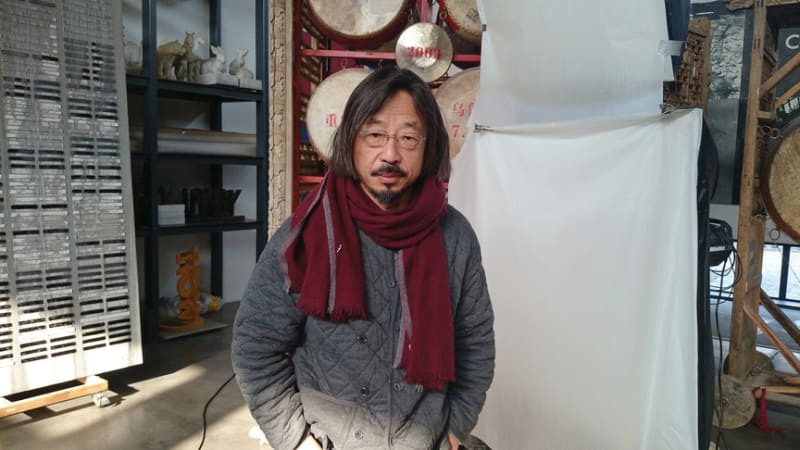Born in Beijing in 1952, Huang Rui is one of the pioneers of contemporary Chinese art that emerged in the 1980s with the artist collective «Xing Xing» («The Stars»), of which he is a founding member alongside Ma Desheng and Wang Keping. In the years following the Cultural Revolution, these artists were the first to publicly claim freedom of artistic expression.
In September 1979, having been unable to obtain an official exhibition space, the Stars decided to materialise their project and hung more than 150 works on the street, on the grids of the National Museum of China in Beijing. This exhibition is a key milestone in the history of contemporary art in China. Ephemeral (1979-1983), the Stars Movement paved the way for Chinese artists and allowed a new wave of art to emerge in the late 1980s.
Integrating at first the influences of the Western avant-garde (cubism, fauvism, abstract expressionism), Huang Rui’s work then develops and distinguishes itself by exploring the relationships between color, space and language. For this intellectual and man of letters (he cofounded the literary magazine Today in 1978), text is not an accessory: the text is the image, the nexus of the work, and its content and form.
Huang Rui is one of the first Chinese painters of the post-Mao era to explore the paths of abstraction (from 1979). Whether it takes a geometric direction or an expressionistic one (Space Structure, Space and more recently Zen Space series), his work on abstraction relies on an understanding influenced by Taoist thinking about space, volumes, textures and colors, in order to explore the complexity of the human soul.
Huang Rui’s work regularly refers to the duality of Yin and Yang and to his research of the Book of Changes. « In my view, the Book of Changes is not a theory, it is about the way you see the world/the way the world sees you/and the interaction between you and the world.»
Huang Rui expresses himself through many mediums, from painting to sculpture and installation to performance. Back in China in 2000, after living in Japan for 15 years, Huang Rui again played a leading role by creating the 798 Art District in Beijing in 2002 and the Dashanzi International Art Festival (DIAF).
Huang Rui lives and works in Beijing. His work has been exhibited all over the world and is present in many public and private collections.

